In the ever-changing landscape of education, the role of technology has grown exponentially, transforming the traditional classroom into a dynamic learning environment. This evolution is not just a trend but a fundamental shift in how we approach teaching and learning. As educators and facilitators of knowledge, understanding the significance and the methods of effectively integrating technology into educational practices is crucial.
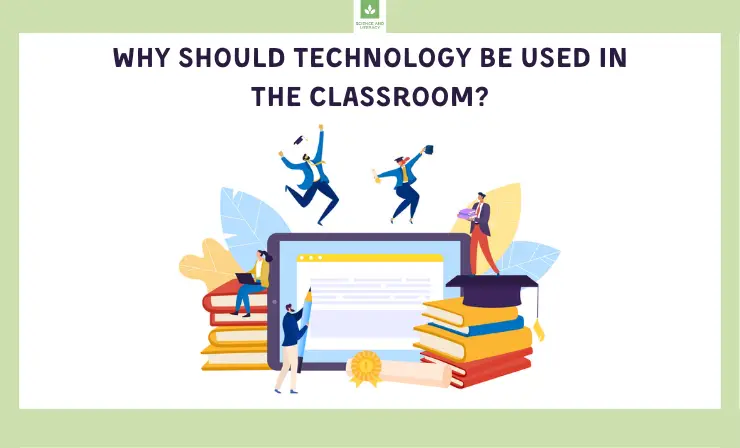
The global pandemic served as a catalyst for this transformation. School closures and the abrupt shift to remote learning propelled educators into the digital realm, necessitating rapid adaptation to online teaching methods and technologies. This period of forced innovation was challenging, yet it revealed the immense potential of technology in education. A 2020 survey by the EdWeek Research Center highlighted this transformation, with 87% of educators acknowledging significant improvements in their proficiency with educational technology (EdTech).
This sudden and widespread adoption of technology in education was more than just a temporary solution to an unprecedented crisis. It marked the beginning of a new era in teaching methodologies, one where digital tools are not just supplementary but integral to the educational process. The experience gained during this period has paved the way for a more tech-savvy approach to education, emphasizing the need to leverage technology not just for its convenience, but for its potential to enrich and diversify the learning experience.
I love using technology in my classroom! ☺️💖 pic.twitter.com/DsMCAwak8o
— Brenda Valenzuela (@miss_vteach) November 27, 2023
As we navigate this new terrain, it’s imperative to delve into the reasons why technology should be a staple in contemporary classrooms. From enhancing student engagement to providing access to a plethora of resources and fostering a culture of innovation, the reasons to embrace technology in education are manifold and compelling. Let’s explore these reasons and understand how they shape the future of education.
After reading this article you’ll know:
- Perspectives on Technology in the Classroom from Teachers and Experts →
- 11 Reasons Why Technology Should Be Used in the Classroom →
- Opposing Views on Technology in the Classroom →
- 5 Ideas for Integrating Technology in the Classroom →
Perspectives on Technology in the Classroom: Insights from Teachers and Experts
The sentiment among educators regarding the use of technology in the classroom is largely positive, with a growing recognition of its benefits in enhancing the educational experience. According to the National Center for Education Statistics (NCES), a considerable number of US teachers – 12% and 32% respectively – acknowledge that smartphones can be very or somewhat useful for school assignments. This recognition marks a shift in perception, viewing these devices as tools for learning rather than mere distractions.
Further emphasizing this positive stance, a significant 53% of teachers, as surveyed by EdWeek, expressed that students’ increased access to individual computers has made teaching more manageable, especially during the unforeseen challenges of school closures. This statistic highlights a broader acceptance and appreciation of digital tools in facilitating education, particularly under challenging circumstances.
For a deeper understanding and practical insights into the effective use of technology in education, educators can turn to resources like the New EdTech Classroom.
Below are some insights from teachers and education experts on the use of technology in the classroom:
“Learning in a connected, technology-rich environment enables young people to undertake meaningful experiences as they engage with peers, celebrities, relatives, and experts worldwide. They are able to connect with both formal and informal learning communities to communicate the results of their work — be it new proposals, new knowledge or solutions, persuasive advocacy (in a variety of interactive media formats), or creative ideas and expression — in ways that previous generations could only imagine. The educational opportunities that technology gives to students are not only amazing, they are transformative!”
“The key is to think about how technology improves the learning culture. How does it offer individuals the opportunity to take more responsibility for contributing? How does it make them be better consumers? How can technology increase their commitment by making audiences or experiences more real? Technology can help us increase the potential of all those things.”
“Real work for real purposes for real audiences — that’s the opportunity our children have today if they have technology in hand and access to the Internet. That’s not to say my 11- and 13-year-old children can’t do meaningful, important work without a device. But as lots of 11- and 13-year-olds are already showing, any child can now do world-changing work in ways that just weren’t possible even 10 years ago. The key is the audience, the connections that they can make with others who want to share in that work. These are the action networks, learning networks that my kids will be swimming in online all of their lives. And we need to teach them how to flourish in these spaces.”
“Find those in your building that have a natural interest in technology, and invest in those folks. But you really have to be strategic with that — you need to select teachers who are master teachers. That doesn’t mean veteran teacher. It means that a teacher who is well respected by their peers, who can ignite the fire of excitement with other teachers. And then once it begins to grow, your job as a principal is to provide what it is that they’re asking for, because before you know it, you have a school full of instructional leaders, and your instructional leaders have to be those folks that are in the classroom, knowing what kind of tools they need to do the job that they do everyday.”
11 Reasons Why Technology Should Be Used in the Classroom
In today’s educational landscape, the significance of technology in classrooms is undeniable. With over 60 percent of students reporting enhanced learning and improved grades due to classroom technologies post-COVID-19, it’s clear that technology resonates positively with the modern learner.
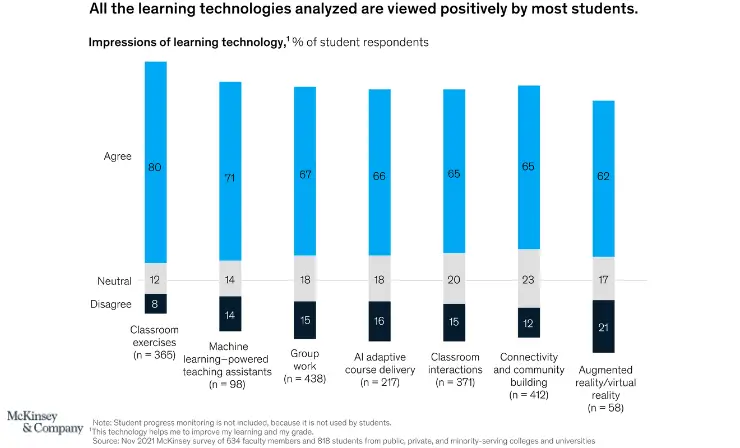
Let’s delve into the reasons for incorporating technology in the classroom.
1. Enhances Student Engagement and Learning
Incorporating technology in the classroom not only aligns with the digital habits of today’s students but also significantly enhances their engagement and learning. The International Society for Technology in Education’s research underscores this, revealing a noticeable increase in student motivation and engagement when technology is a part of their learning process. This is largely attributed to the interactive and dynamic nature of technology, which resonates with students accustomed to digital environments.
Technology transforms learning into an exciting journey with features such as:
- Educational Games and Quizzes: These tools foster interactive learning, transforming traditional lessons into engaging experiences.
- Online Polls: Facilitate active student participation and feedback.
- Coding Activities: Offer practical problem-solving experiences.
- AR/VR Technologies: Provide immersive and exploratory learning opportunities.
Incorporating technology effectively requires educators to guide students in responsible digital use, critical evaluation of information, and development of information literacy skills. Moving away from traditional, passive learning models, technology facilitates an active learning environment. For instance, gamification strategies can lead to significant improvements in student performance. Research indicates that challenge-based gamification can enhance student performance by up to 89%, transforming learners from passive recipients of information to active participants in their educational journey.
In sum, the integration of technology in education is not just about keeping up with digital trends; it’s about leveraging these tools to make learning more engaging, interactive, and relevant to the students’ everyday lives.
2. Facilitates Personalized Learning
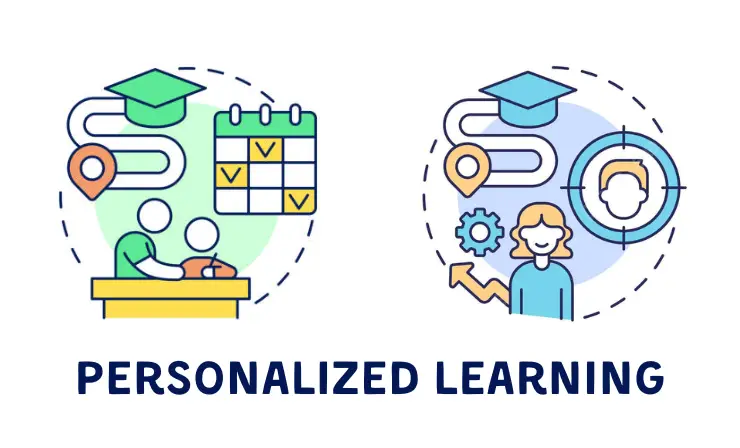
In today’s diverse classrooms, where each student has a distinct learning style, the use of technology plays a pivotal role in facilitating personalized learning experiences. Digital tools like educational apps and online resources provide multiple approaches to grasp a single concept, allowing educators to tailor instruction to suit different learning styles and paces.
Recognizing that no two students learn the same way, technology becomes an invaluable asset for educators. It enables them to address the diversity in learning styles and experiences effectively. Research indicates that when students feel comprehended, it significantly enhances their depth of learning.
Key benefits of technology in personalized learning are:
- Addressing Diverse Learning Styles: Technology caters to varied educational preferences, from visual and auditory learners to those who prefer interactive engagement.
- Range of Educational Modalities: Incorporates various learning methods like videos, audiobooks, and games, accommodating different paces of learning.
- Updated Content: Ensures access to the latest educational materials, keeping students abreast of current information.
This approach to personalized learning not only enhances the educational experience but also ensures that each student’s unique learning needs are met, leading to a more inclusive and effective learning environment. Technology in education, therefore, is not just a tool but a bridge to a more tailored, responsive, and dynamic educational journey.
3. Prepares Students for the Future
Integrating technology into education is not just about keeping pace with the digital age; it’s about equipping students with the skills they need for a technology-dominated future. A Stanford Center for Opportunity Policy in Education report highlights how students acquire essential 21st-century skills like problem-solving, critical thinking, and digital literacy through technology in the classroom. These are not just academic skills; they are the tools for success in the modern workplace.
To be successful in the 21st-century workplace, students need more than basic knowledge of technology. They require firsthand exposure to the tools and skills that are increasingly becoming the norm in modern work environments. By weaving technology into the fabric of everyday learning, educational institutions are ensuring that students are well-prepared for the future workforce.
Here’s how technology in classrooms is shaping future-ready students:
- Mastering Digital Literacy: In today’s digital-centric world, integrating technology into classroom learning is crucial for developing digital literacy. It equips students with the ability to efficiently use various digital platforms, manage productivity tools, and effectively communicate in the digital realm.
- Skills in Information Management: The ability to sift through, organize, and interpret large volumes of data is a skill made possible by technology in the classroom. This proficiency is increasingly important in modern workplaces that rely on data for informed decision-making.
- Cultivating Adaptability and Flexibility: Regular exposure to diverse digital tools within the educational setting cultivates a student’s ability to adapt and be flexible. Such adaptability is essential in today’s rapidly changing work environments, where new technologies are constantly emerging.
- Fostering Creativity and Innovation: The use of technology in education opens doors to creative and innovative thinking. Students can delve into multimedia presentations, engage in project design, or experiment with prototyping, skills that are immensely valued across various creative industries.
- Enhancing Collaboration and Communication: Modern collaborative tools like Zoom, Microsoft Teams, and Google Drive are more than just software; they’re virtual workplaces. These platforms enable students to practice virtual collaboration and communication, essential skills that reflect the teamwork and interpersonal dynamics of the modern workplace.
By preparing students in these areas, technology in the classroom is not just an educational tool; it’s a vital bridge to their future careers, ensuring they are ready to navigate and contribute to a rapidly evolving digital world.
4. Increases Collaboration and Communication
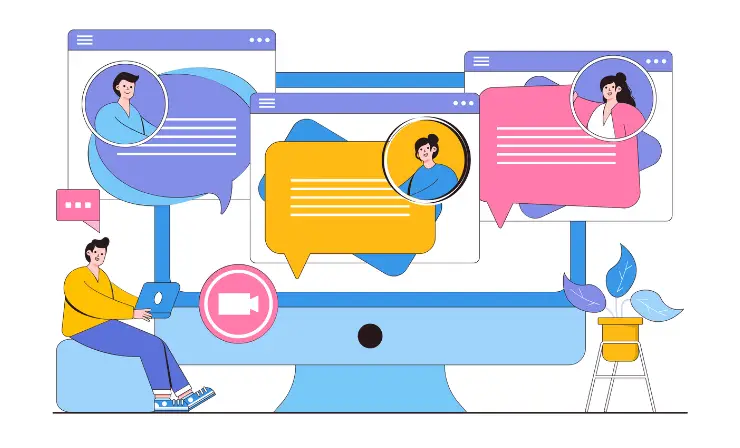
The integration of technology in classrooms dramatically enhances collaboration and communication, two vital skills for success in both academic and professional realms. Educational platforms and group chat applications are just the tip of the iceberg in facilitating teamwork and interactive learning.
- Strengthening Connections: One of the keystones of effective education is the connection between teachers and students. Modern technology offers a unique avenue for these connections, enabling educators to engage with students through digital means. This approach aligns with the digital inclination of many students, making learning more relatable and accessible. By integrating technology into teaching, educators can explore new methods to convey curriculum material, opening up dynamic lines of communication and understanding.
- Promoting Community Building: In today’s educational landscape, fostering a sense of community is crucial. Technology provides an ideal platform for this, allowing students and teachers to connect beyond the traditional classroom setting. This digital interaction not only enhances learning but also strengthens the sense of community within a course.
- Cultivating Collaborative Learning: An interactive and engaging learning environment thrives on collaboration. With technology, students can engage in discussions, share ideas, and work on projects together, even remotely. This collaborative approach is further enhanced when tech-savvy students share their knowledge and skills with peers, creating a supportive and cooperative classroom culture.
In summary, the use of technology in education is not just about staying current with digital trends; it’s about building a more connected, collaborative, and communicative learning environment. This approach not only benefits students academically but also prepares them for the collaborative nature of the modern workplace.
5. Expands Educational Resources
In the digital age, technology significantly expands educational resources, transforming how students access and engage with information. The internet, a vast repository of knowledge, offers unparalleled opportunities for learning, transcending the limitations of physical textbooks and traditional classrooms.
- Digital Libraries: One of the most significant advantages of technology in education is the access it provides to digital libraries. These online databases are treasure troves of academic materials, including e-books, scholarly articles, journals, and a plethora of multimedia content. They are particularly beneficial for in-depth research and accessing diverse viewpoints on various subjects.
- Online Platforms: The rise of educational platforms and Learning Management Systems (LMS) has revolutionized information accessibility. These platforms serve as centralized hubs where educators can upload and manage course materials, including digital textbooks, multimedia content, interactive modules, and assignments. This integration of resources enhances the teaching and learning process, making it more streamlined and efficient.
- Open Educational Resources (OER): The concept of OER has gained significant traction in recent years. These are educational materials freely accessible online for anyone to use, modify, and distribute. OER platforms offer an extensive range of resources, including textbooks, lesson plans, videos, and more, which educators can adapt to fit their curriculum needs. This openness and flexibility in resource availability democratize education, making high-quality learning materials accessible to all, regardless of geographic or economic barriers.
By integrating these technological resources, educators can provide a richer, more diverse educational experience. They enable students to delve deeper into subjects, broaden their horizons, and engage with learning materials that are current, interactive, and tailored to their individual learning styles. The use of technology in education, therefore, is not just about convenience; it’s about expanding the boundaries of learning and opening new avenues for exploration and discovery.
6. Enables Efficient Assessment and Feedback
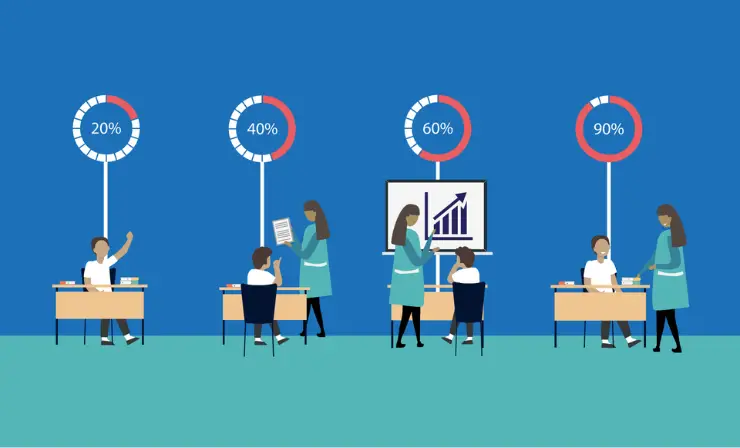
The integration of technology in classrooms has revolutionized the way educators assess student performance and provide feedback. It introduces efficiency and precision into the evaluation process, enabling educators to track and respond to student needs more effectively.
- Real-time Assessment: Technology allows for real-time assessment of student learning. Digital quizzes and online assessments can be automatically graded, providing instant feedback to both students and teachers. This immediate response helps students understand their areas of strength and weakness and allows teachers to adjust their instruction accordingly.
- Personalized Feedback: Digital platforms enable teachers to provide personalized feedback. Through learning management systems, educators can leave detailed comments on student assignments, addressing specific areas for improvement. This tailored approach to feedback ensures that each student receives the attention and guidance they need to succeed.
- Tracking Student Progress: Technology also simplifies tracking student progress over time. Digital grade books and analytical tools in educational software allow educators to monitor each student’s performance across various assignments and activities.
Technology in education streamlines the assessment process, making it more efficient, responsive, and student-centered. By leveraging digital tools for assessment and feedback, educators can provide a more engaging and personalized learning experience, ultimately leading to improved student outcomes.
7. Overcomes Geographical Limitations
The advent of technology in education has significantly bridged the geographical divide, enabling classrooms to transcend physical boundaries and connect with the global community. This expansion has not only enriched the educational experience but also fostered global awareness and cultural exchange among students.
- Connecting with Global Experts: Technology enables classrooms to invite experts from various fields across the world for virtual guest speaker sessions. This allows students to engage directly with professionals and academics, gaining insights and perspectives that enhance their learning and understanding of different subjects.
- Cultural Exchange and Global Awareness: Through online collaborations and virtual exchange programs, students can interact with peers from different cultural backgrounds. This exposure to diverse perspectives helps in developing a broader worldview, fostering tolerance, and understanding of global issues.
- Overcoming Access Limitations: By leveraging technology, educators can provide students with resources and experiences that were previously inaccessible due to geographical constraints. This includes virtual tours of historical landmarks, real-time interactions with scientists conducting fieldwork, or exploring artworks in international museums.
The integration of technology in education to bridge the geographical divide is supported by various initiatives and creative solutions:
- Comcast waived late fees and increased data for mobile hotspots for households with K-12 students, offering new customers with school-age children 60 days of free service to facilitate online learning during school closures.
- School districts have partnered with media outlets to deliver educational content; Los Angeles schools teamed up with PBS stations to run virtual learning programs through television, a method replicated by Arkansas PBS after California’s success.
The use of technology in education transcends geographical limitations, offering students a dynamic and enriched learning experience. It not only connects them to the wider world but also fosters a sense of global citizenship, preparing them to engage effectively in an increasingly interconnected world. This approach to education is vital in developing well-rounded individuals who are aware of and sensitive to the diverse cultural tapestry that makes up our global society.
8. Supports Diverse Learning Environments
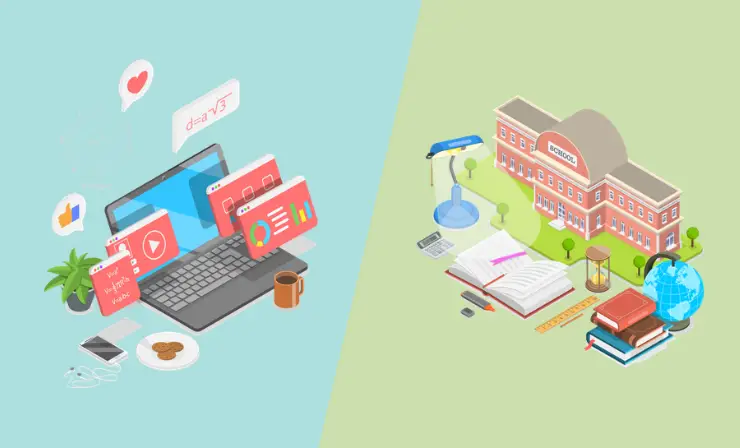
The COVID-19 pandemic underscored the indispensable role of technology in supporting diverse learning environments. When traditional classrooms were no longer accessible, technology stepped in as a vital tool to ensure the continuity of education. This period highlighted how technology can adapt to various learning settings, proving essential for modern education systems.
- Virtual Classrooms: During school closures, technology facilitated the shift to virtual classrooms. By the summer of 2020, EdWeek found that an overwhelming 93% of teachers in the United States were delivering some portion of their instruction online from their homes. Platforms like Zoom, Google Classroom, and Microsoft Teams enabled teachers to conduct live lessons, maintain student engagement, and provide a semblance of normalcy in an unprecedented situation.
- Blended Learning Models: Technology supports blended learning, where students experience a mix of online and in-person education. This approach tailors learning experiences to individual needs, allowing students to work at their own pace and access resources both in and out of the traditional classroom setting.
- Accessibility and Inclusivity: Educational technology can be a great equalizer, providing learning opportunities to students regardless of their location or socio-economic background. Online resources, digital textbooks, and educational apps make learning more accessible to a wider audience.
Technology in education is no longer just an auxiliary tool but a fundamental component in creating and supporting diverse and inclusive learning environments. It has proven its worth as an enabler of continuous learning, regardless of external circumstances, and is essential in preparing students for the ever-evolving global landscape.
9. Reduces Environmental Impact
The integration of technology in classrooms significantly contributes to reducing the environmental impact of traditional educational practices. As we strive for more sustainable solutions, technology offers effective alternatives that minimize the ecological footprint of teaching and learning activities.
Digital Textbooks and Resources: The shift from physical textbooks to digital ones is a major step in reducing paper usage. E-books and online resources not only save trees but also decrease the energy and resources expended in printing, transporting, and disposing of physical books.
Less Paper Waste: Utilizing digital platforms for assignments, tests, and notes significantly cuts down on paper consumption. Teachers can distribute materials electronically, and students can submit their work digitally, dramatically reducing the need for physical paper.
Reduced Carbon Footprint: Online learning and virtual classrooms can diminish the need for commuting to educational institutions, thereby reducing carbon emissions associated with transportation. This is particularly relevant in higher education and adult learning environments, where students often travel significant distances.
Key environmental benefits of using technology in education include:
- Conservation of Natural Resources: By using digital materials, the educational sector can play a significant role in conserving natural resources like trees and water.
- Energy Efficiency: Digital devices and cloud storage are more energy-efficient compared to the production and disposal of traditional learning materials.
- Reduced Pollution: With less reliance on physical materials, there is a decrease in the pollution associated with manufacturing, transportation, and waste management.
Incorporating technology into classrooms aligns with global efforts to create more environmentally sustainable practices. By embracing digital tools and resources, the education sector can significantly contribute to conserving the planet for future generations while still providing quality education.
10. Educates Students on Digital Citizenship
In today’s digital age, incorporating technology into classroom settings goes beyond just enhancing academic learning; it also plays a vital role in teaching students about digital citizenship. This concept encompasses understanding how to interact responsibly in the digital world, a skill as essential as any traditional subject taught in schools.
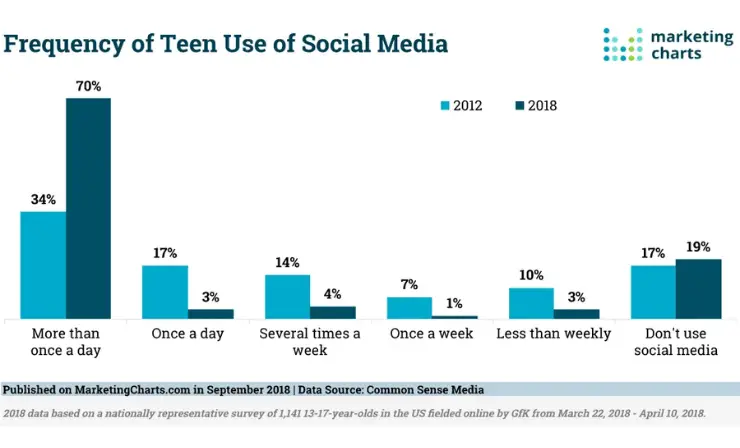
Here’s how technology in classrooms contributes to this important aspect of education:
- Safe Online Behavior: Technology in the classroom provides a controlled environment where students can learn about safe online practices. Educators can guide students on how to protect their privacy, recognize credible sources, and avoid cyberbullying, ensuring they understand the implications of their digital actions.
- Ethical Use of Information: Through technology, students learn about the ethical aspects of using digital content, including understanding copyright laws, plagiarism, and the importance of giving credit to original sources.
- Navigating the Digital World: Students gain firsthand experience in navigating various online platforms and tools, which is crucial for their future personal and professional lives. This experience teaches them how to effectively and responsibly use these platforms.
- Developing a Digital Footprint: Educators can discuss the concept of a digital footprint and its long-term impacts. Students learn that their online actions can have consequences, highlighting the importance of maintaining a positive digital presence.
By incorporating technology into education, teachers can effectively educate students on being good digital citizens. This education is critical in preparing students to navigate the complex and ever-evolving digital landscape, ensuring they are not only tech-savvy but also responsible and ethical digital participants.
11. Advances Careers with Technology Expertise
In the ever-evolving educational landscape, the mastery of classroom technology not only enhances teaching methodologies but also opens new career avenues for educators. Modern educational institutions are increasingly valuing teachers who are adept at integrating technology into their teaching practices. Although the U.S. Bureau of Labor Statistics (BLS) doesn’t provide specific growth projections for the edtech sector, it anticipates a significant expansion in the broader computing and IT industry. This field is expected to experience growth at a rate “much faster than average,” about 11 percent, potentially introducing over half a million new jobs between 2019 and 2029.
The rise of EdTech has created a plethora of new roles within the education field, catering to various aspects of technology-enhanced learning. These roles range from operational to strategic positions, including:
- Academic Operations Manager: Overseeing the implementation of technology in academic settings.
- Chief Learning/Technology Officer: Leading the strategic integration of technology in educational institutions.
- Classroom Teacher with Tech Expertise: Enhancing day-to-day teaching with innovative technology.
- Curriculum Design Manager: Developing tech-integrated curricula that cater to diverse learning styles.
- Director of Online Learning: Managing and improving online learning platforms and strategies.
- Innovation Director: Spearheading new technological initiatives in education.
- Instructional Designer: Crafting engaging and effective digital learning experiences.
Gaining expertise in EdTech not only positions educators at the forefront of instructional innovation but also significantly broadens their career prospects. Pursuing higher education, such as a Master of Education in Educational Technology & Innovation can be a strategic move. Such advanced degrees equip educators with the necessary skills and knowledge to access leadership roles in the EdTech field, marking a significant step in career progression and professional development.
Addressing Opposing Views on Technology in the Classroom
While the benefits of integrating technology into education are numerous, there are opposing viewpoints that merit discussion. Below are some common arguments against the use of technology in the classroom, along with counterpoints that challenge these perspectives.
1. Technology is a Distraction
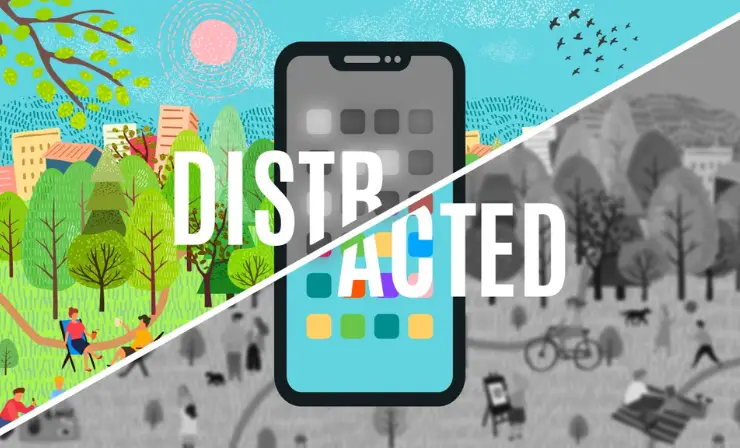
Critics argue that technology in classrooms can be a significant distraction, leading students to focus on non-educational activities, such as social media and games.
While it’s true that technology can be distracting, this challenge can be mitigated through structured and guided use. Here are some rules and guidelines that can be implemented:
- Defined Usage Policy: Establish clear policies on when and how technology should be used in the classroom. This could include specific times for educational apps and platforms, and restrictions during lectures or discussions.
- Focused Learning Activities: Design lessons that integrate technology in a way that complements and enhances the learning objectives. This could involve interactive assignments, digital research projects, or technology-based group work.
- Regular Monitoring: Utilize software that allows for monitoring students’ screens and activities. This ensures that technology usage remains on-task and education-focused.
- Educate on Digital Etiquette: Teach students about digital citizenship and the importance of staying focused during class. This includes lessons on the appropriate use of technology and the consequences of misuse. Want to keep phones in the classroom in check? Read our article for tips on creating an effective cell phone policy.
Educators can establish clear rules and use monitoring tools to ensure that technology is used for educational purposes. Additionally, when technology is integrated into the lesson plan in a meaningful way, it becomes a tool for engagement rather than a distraction.
2. Overreliance on Technology Reduces Critical Thinking
Critics argue that easy access to information reduces students’ ability to think critically or solve problems independently.
Technology, when used correctly, can actually enhance critical thinking skills. Online resources can provide diverse perspectives and complex problems, challenging students to think critically. Additionally, technology-based tasks can require students to analyze information, make decisions, and solve problems, thereby fostering independent and critical thinking.
For further insights into the impact of technology on critical thinking, view this informative video.
3. Loss of Traditional Learning Skills
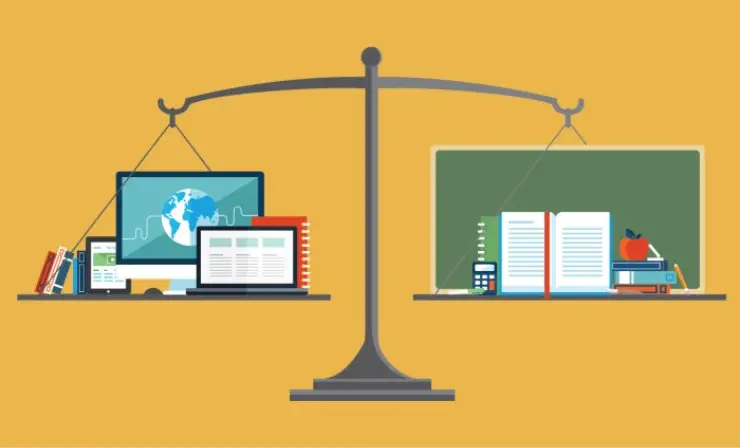
There’s a fear that reliance on technology in the classroom leads to the erosion of traditional learning skills, such as handwriting and basic arithmetic.
‘Educators need to take a step back and ask not ‘how can I replicate what I do in the classroom’, but ‘how can I redesign this learning experience to take advantage of a whole wealth of technology that can deliver a full learning experience’ https://t.co/9co0lzqQ6Y
— Neil Mosley (@neilmosley5) May 18, 2020
Technology should be seen as a supplement to, not a replacement for, traditional learning methods. It’s about finding the right balance. For instance, while students might use tablets for research or creating presentations, they can still engage in handwriting exercises or mental math problems in other parts of their curriculum.
4. Health Concerns
Prolonged use of technology in the classroom is cited as a health concern, potentially leading to issues like eye strain, poor posture, and reduced physical activity.
Health concerns are important to consider, but they can be addressed through proper guidelines and practices, such as:
- Regular Breaks: Encourage students to take short breaks every 20-30 minutes to reduce eye strain and mental fatigue. This can involve stretching, walking around, or simply looking away from the screen.
- Ergonomic Setup: Promote an ergonomic classroom setup with comfortable seating and proper screen positioning to avoid poor posture and neck strain.
- Limit Screen Time: Implement guidelines to limit continuous screen time. Balance technology use with traditional learning methods and physical activities.
- Eye Care Practices: Teach students about the 20-20-20 rule – every 20 minutes, take a 20-second break and look at something 20 feet away to reduce eye strain.
- Proper Lighting: Ensure the classroom is well-lit to reduce glare and strain on the eyes. Adjust screen brightness to comfortable levels.
Additionally, technology can be used to promote physical activity through interactive games and activities.
While the concerns surrounding technology use in education are not unfounded, they are not insurmountable. With careful planning, structured implementation, and a balanced approach, the potential drawbacks can be effectively managed, allowing students and educators to reap the substantial benefits of technology in the classroom.
Check out this video for practical exercises designed to alleviate eye fatigue, perfect for incorporating into your classroom routine.
5 Ideas for Integrating Technology in the Classroom
Integrating technology into the classroom can enhance learning experiences and engage students in innovative ways. Here are some ideas for effectively utilizing technology in educational settings:
1. Interactive Whiteboards
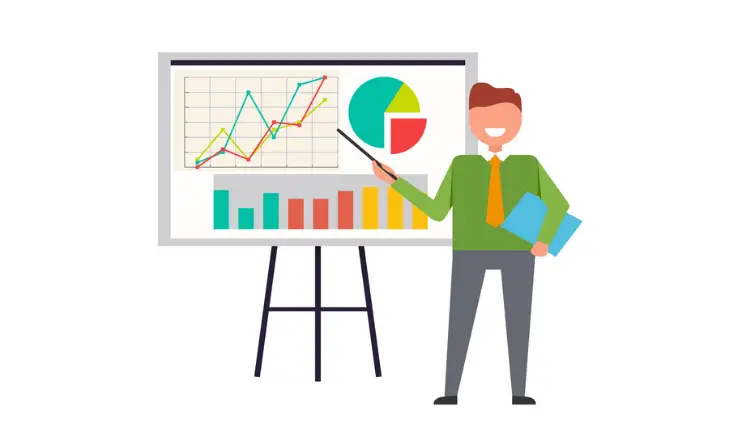
Use interactive whiteboards to display multimedia content, encourage collaborative problem-solving, and allow students to interact with learning materials directly. Document cameras can also enhance the utility of whiteboards, making them an even more effective teaching tool. Explore our curated articles on the top whiteboards and document cameras to discover the perfect fit for your needs.
2. Educational Apps and Games
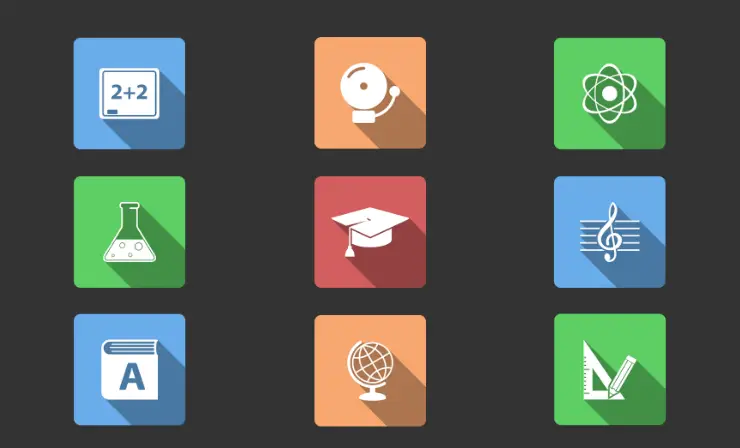
Gamification has been shown to have an impact on a student’s learning and engagement because of how it helps to build a sense of achievement. Many students are motivated to move to the next lesson when they know they can achieve something along the way. Look around and see if there are any gamified learning opportunities for your subject material on the Internet — you’ll be surprised what’s out there!
3. Virtual Field Trips
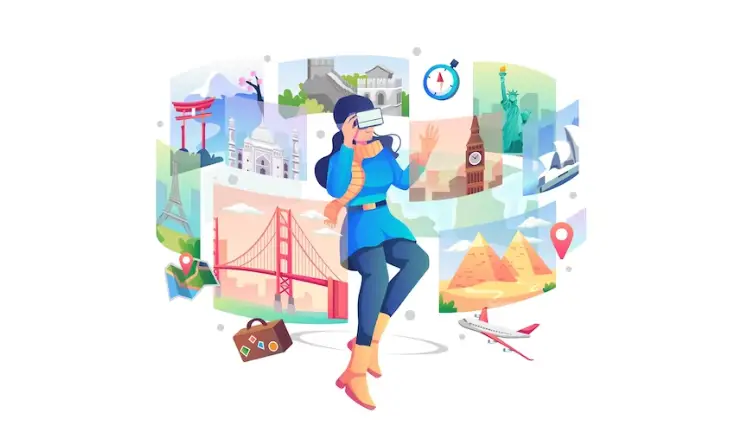
Utilize virtual reality (VR) or augmented reality (AR) to take students on virtual field trips to historical sites, museums, or even outer space. For instance, a geology professor can virtually guide students through the Grand Canyon, offering an immersive learning experience that would be impossible within the four walls of a traditional classroom.
4. Coding and Robotics
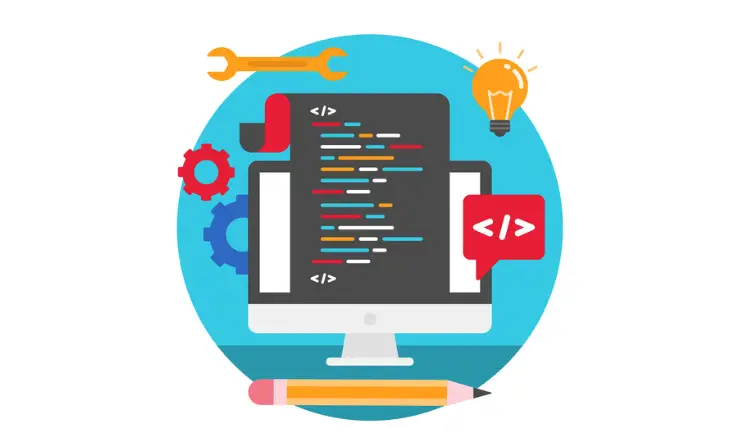
Introducing coding via educational platforms like Scratch or Code.org offers an engaging way to learn problem-solving and computational thinking. These activities often involve creating simple programs or animations, making learning both fun and practical. You can also use simple robotics kits to teach problem-solving and computational thinking.
5. Online Assessments and Quizzes
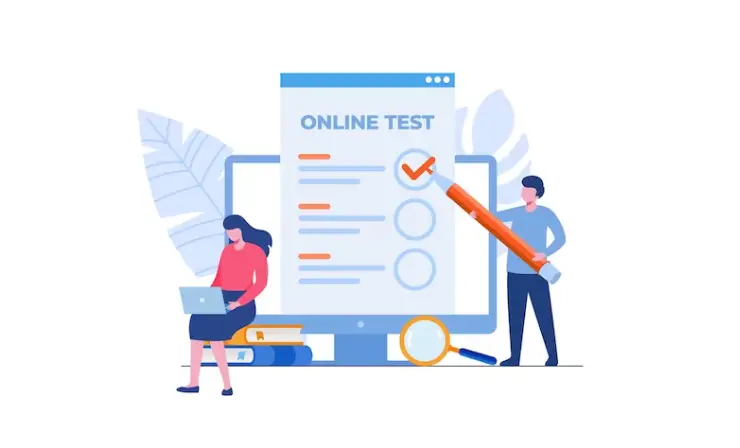
Use online platforms for assessments and quizzes, providing instant feedback and the ability to track student progress over time.
These ideas can be adapted to suit different age groups and learning objectives, offering a range of possibilities to make learning more dynamic and engaging through technology.
Useful Resources
- Technology in Education: An Overview
- The International Society for Technology in Education
- Technology in Education Overview by UNESCO
Conclusion
Integrating technology in the classroom is pivotal for modern education. It not only enhances engagement and personalized learning but also prepares students for a technology-driven future. By bridging geographical divides and promoting digital citizenship, technology in education empowers students to thrive in a globally connected world, making it an indispensable tool for educators and learners alike.
References
- “How COVID-19 Is Shaping Tech Use. What That Means When Schools Reopen”, EdWeek
- “Teachers’ Use of Technology for School and Homework Assignments: 2018–19”, National Center for Education Statistics
- ISTE
- Angela Maiers
- Powerful Learning Practice
- FOREST LAKE ELEMENTARY
- “How technology is shaping learning in higher education”, McKinsey & Company
- “The effect of challenge-based gamification on learning: An experiment in the context of statistics education”, ScienceDirect
- “Why is it Important for Students to Feel a Sense of Belonging at School? ‘Students Choose to be in Environments That Make Them Feel a Sense of Fit,’ Says Associate Professor DeLeon Gray”, NC State University
- “Reframing Student Outcomes to Develop 21st Century Skills”, Stanford Center for Opportunity Policy in Education
- “The Impact of Technology on Collaborative Learning”, ReseacrhGate
- “The Impact of Technology in Educational Resources: a Survey and New Perspectives”, ReseacrhGate
- “Using technology to encourage student engagement with feedback: a literature review”, ReseacrhGate
- “Here’s What Schools Can Do For the Millions of Students Without Internet Access”, EdSurge
- “How to reach students without internet access during coronavirus? Schools get creative”, NBC News
- “Pros and cons of online education as a measure to reduce carbon emissions in higher education in the Netherlands”, ScienceDirect
- “Frequency of Teens’ Social Media Use, 2018 vs. 2012 Articles”, Marketing Charts
- “Computer and Information Technology Occupations”, U.S. Bureau of Labor Statistics
- Overview of 22 Low-Code Agencies for MVP, Web, or Mobile App Development - October 23, 2024
- Tips to Inspire Your Young Child to Pursue a Career in Nursing - July 24, 2024
- How Parents Can Advocate for Their Children’s Journey into Forensic Nursing - July 24, 2024
